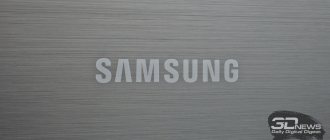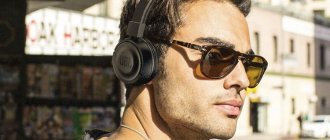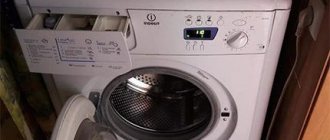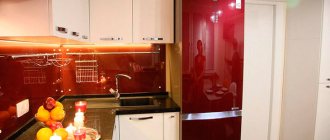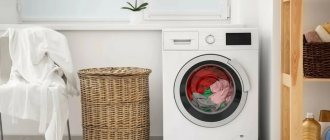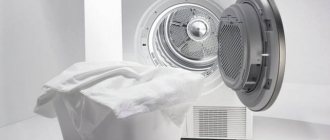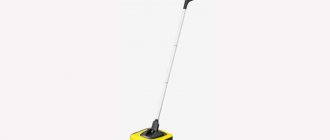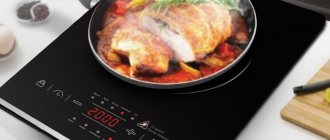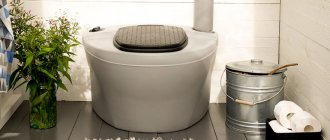How to choose an overlocker
An overlocker is not a stand-alone machine; for a full sewing cycle you will also need a sewing machine. However, in addition to basic functions, an overlocker is used for finishing parts, sewing on ribbons, elastic and beads.
Most overlockers have similar features, although some work better with certain types of fabric and differ in their threading systems.
What you need to pay attention to when choosing an overlocker
- Overlock or carpet? Simple models of overlockers are compact and can make basic overlock seams. The latest models of overlockers combine the functions of overcasting and cover-stitching machines - such machines are called overlockers. Carpet lockers replace two machines at once and are distinguished by their high cost and an expanded range of stitches.
- Number of threads to create a stitch. Standard overlockers are equipped with three or four spools, which are used to create three- and four-thread seams. Some machines are equipped with converters for using double-thread stitches. Coverlock stitches use a five-thread system to create complex combined stitches.
Three spools will help you make a standard overlock stitch, while a larger number of spools makes threading more difficult, although it gives a wide selection of stitch types.
- Automatic or manual threading . Most overlockers are equipped with colored guides for threading needles and loopers. Some models are equipped with manual needle threaders; advanced machines can thread needles automatically.
- Knives. A distinctive part of an overlocker from a sewing machine is the presence of two knives for cutting fabric. The upper knife, as a rule, can be turned off. Most machines are designed with a bottom drive, although some models are equipped with a top drive blade. This allows you to process thick fabrics and control the cutting process.
- Number of types of lines. This parameter depends on what you plan to use the overlocker for. For beginners, a basic overlock stitch and hem stitch are enough. Expensive models can make decorative and special stitches for quilting, patchwork and knitted fabrics.
- Manual or automatic thread tension. The tension of each thread in the overlocker is controlled individually. Simple models have mechanical regulators. Expensive models are equipped with electronic controls with a liquid crystal display and offer automatic thread tension control depending on the selected stitch and type of material.
- Adjustable stitch size. Pay attention to the range of changes in stitch length and width. Some models automatically adjust the stitch width to the selected length.
- Adjustable pressure on the presser foot will be required if you plan to process different types of materials - from light to denim and curtains.
- Switch between stitch types. Advanced models allow you to select stitch types by switching functions on the electronic display, while cheap overlockers may require replacing the needle plate to select a different stitch type.
What parameters can you ignore when buying an overlocker?
- The sleeve platform will facilitate the processing of cylindrical parts - sleeves, cuffs, trouser legs. Without it, however, these functions are also feasible.
- Differential conveyor for supplying material. This device will help you finish edges more accurately, especially on thin and elastic materials. All modern overlockers are equipped with differential feed, although its pitch may vary.
- Illumination of the working surface. Almost all overlockers illuminate the work surface. Expensive models use LED lighting, while cheap ones use incandescent lamps.
- Additional table to add work space. This part is convenient when working with large parts, but is not an essential item.
- The waste bin on the front of the machine collects the cut fabric. Basically all models are equipped with this part; the issue is ease of use.
- Additional accessories in the form of feet for different types of stitches expand the possibilities of using the overlocker and are supplied with some models. Often these parts can be purchased additionally from the same manufacturer.
Operating principle and design features of a sewing overlock machine
The equipment in the form of a compact body with a working surface with needles and knives is used exclusively for trimming and seaming edges. Overlockers consist of the following units:
- automatic or manual thread holder;
- loopers - a mechanism that intertwines yarn while the needle moves;
- a flywheel that starts the machine;
- conveyor - the fabric is pulled along it during processing;
- converter - used for working with very thin fabrics;
Advice: preference should be given to devices with the ability to enable/disable the converter.
- puncture stabilizer - ensures a smooth, fast process. Suitable for denser materials;
- Adjusting the stitch length makes stitching easier and increases productivity.
The sewing machine automatically trims the frayed edge and wraps it with a beautiful stitch: overcast, overcast, flat, hem or hem. The end result is a beautiful product with smooth edges.
Attention! The built-in blade ensures the creation of perfectly smooth, seamless cuts. The finished product does not require additional processing.
Best household overlocker – Brother 1034D
Brother 1034D - This model uses three or four threads, which are used to create functional or decorative stitches, including various types of overlock stitches, roller stitching and flatlock imitation.
The stitching can be adjusted, the stitch length can be adjusted from 0.8 to 4 mm. Thread guides are color coded.
The simple design makes this model comfortable even for beginners.
A needle threader is provided for the looper. The overlocker easily switches to other types of stitches. The knife blade can be retracted; when the knife is lowered, the cut fabric is collected in the waste bin. The adjustable foot controls the gap between the presser foot and the needle plate when sewing thick or thin fabrics.
The loose sleeve will help when working with cuffs and sleeves. The light weight and dimensions allow this device to be moved to another location. The kit includes a bag for accessories, 5 needles, spool nets, a key, 4 holders, and a brush.
Characteristics
- 22 built-in functions.
- 1300 stitches per minute.
- Differential conveyor.
- Number of threads per line: 3, 4.
- Tension control.
- Sleeve platform.
- Presser foot lifting height: 5 mm.
- Maximum stitch size (length x width): 5 x 7 mm.
- Motor power: 120 W.
- Weight: 6.8 kg.
- Size: 39 x 33 x 32 cm.
pros
- Inexpensive economy class machine with a wide range of sewing operations.
- Easy machine setup.
- High quality stitching.
Minuses
- Manual threading.
- Small package, additional accessories will need to be purchased separately.
Customer Reviews
Despite the lack of an automatic needle threader, threading is easy. The device has excellent quality and advanced features at an affordable price. There is a high sewing speed and wide functionality.
The overlocker is reliable and comfortable to use, easy to use. There are complaints about inconvenient instructions and the lack of a training disc, so use may be difficult for beginners. The device makes noise and vibrates during operation.
What can you buy in addition?
Taking advantage of the availability and ease of purchasing goods at TekstilTorg, we advise you to look at other household appliances.
- Steam cleaner.
Convenient and easy to use, it easily copes with various stains on coats, suits and upholstery that may appear during the processing of products or during its use. - Steamer.
It will gently smooth out freshly sewn garments and carefully smooth out the most difficult folds and narrow parts of clothing. It will not replace an iron, but it can be an excellent addition when working with rough, delicate and capricious fabrics. - Dummy.
It is a must have for those who are seriously passionate about home sewing. The mannequin does not take up much space, but allows you to check the correctness of the lines of the cut product at any time, make the necessary corrections, and steam the finished dress or suit. - An embroidery machine
will be a great addition to your sewing equipment and will give you the joy of creativity. Your clothes and interior items will be decorated with wonderful embroidery designs and will look original and interesting.
At TekstilTorg you can also find a replacement for an outdated sewing machine
, choosing a new, more powerful and improved model.
Or buy a second overlocker
, which is especially important for those who sew at a professional level and cannot waste precious time on frequent rethreading.
The best overlock for knitwear – Pfaff Coverlock 4.0
Pfaff Coverlock 4.0 is a multifunctional coverlock with automatic thread tension and control of stitch length and width. Performs overlock two-, three- and four-thread seams, chain stitch, three- and four-thread cover flat seams, as well as combined ones, combining overlock and cover stitches.
There is a built-in rolled hem switch and presser foot force control. There is a manual needle threader for the upper threads; threading into the loopers is done using auxiliary levers and an open sleeve. The device is equipped with a lower blade drive; the upper blade can be turned off.
The package includes a table to increase the working area, spool nets, brush, 2 screwdrivers, knife, 5 holders, 5 needles, thread guide, stylus, platform for cover stitch, case, tweezers, oiler.
The carpet lock is suitable for working with velvet, wool and terry fabric, silk, denim, cotton and knitwear.
There is an electronic advisor and electronic control with memorization of personal stitch sizes for quick return of settings. When switching from overlock stitches to cover stitches, there is no need to replace the presser foot.
The differential feed is adjusted automatically depending on the thickness of the fabric. There is a built-in converter for two-thread stitches and 5 speed modes for creating neat stitches in various techniques.
Characteristics
- 25 built-in functions.
- 1500 stitches per minute.
- Number of threads per line: 2, 3, 4, 5.
- Presser foot lift height: 4.5 mm.
- Differential conveyor.
- Maximum stitch size (length x width): 4 x 7 mm.
- LCD touch screen with stylus.
- Color coding of thread guides.
- Additional table.
- Illumination of the work surface with two lamps.
- Garbage bin.
- Power: 105 W.
- DVD with interactive instructions.
- Weight: 9.2 kg.
- Size: 40 x 32 x 32.6 cm
pros
- A large number of sewing operations for performing functional and decorative stitches.
- High quality seams.
- Large work surface for making flat seams.
Minuses
- High price.
- Small number of available accessories.
- Slight lift of the presser foot.
Customer Reviews
A carpetlock is considered as a large, heavy machine that stands firmly on the table and operates quietly and without vibration. Convenient automatic cord winding on the pedal and uniform illumination of the working surface.
The machine works great with thick materials and produces neat stitching on knitted fabrics. When turned off, the overlock remembers the last settings. Difficult threading and inconvenient control of thread tension are noted. It is difficult for beginners to understand the electronic control; they have to spend time setting it up.
Types of sewing devices
There are two types of machines on the sewing equipment market that provide professional sewing.
Overcasting machine - overlock
Provides accurate cutting of the workpiece and processing of edges. Standard machines are designed for 2-5 spools and can easily process knitwear, silk, cotton, satin, and wool. When choosing, it is important to consider the quantity and type of suitable threads - the quality, reliability of the seam, and the variety of stitches depend on this.
Interesting! Some models of overlockers are capable of overcasting the edges of carpets.
Non-professional machines are characterized by a number of advantages:
- light weight - 5-12 kg;
- work at a speed of 1500 stitches in 1 minute
- making elastic stitches that stretch in two directions;
- adjustment and adjustment of thread feed and tension, fabric drawing speed, gaps under the presser foot;
- possibility of equipping with an additional hose platform;
- work surface illumination;
- the presence of an option to turn off the blade.
Manual models are suitable for experienced needlewomen due to the complex filling system. In addition, you will have to find only good quality threads.
Overcasting machine - overlock
Coverlock
A hybrid that combines the functions of a cover stitching machine and a traditional overlocker. The device is needed for stitching cuts, hemming folded edges, and stitching cut parts.
Interesting! Using a carpet locker, handmakers create decorative, elastic chain stitches and combined patterns.
The sleeve platform of the carpet locker is longer than that of the overcasting device. As for the speed of work, it performs 1300 stitches in 1 minute. Among the advantages are:
- functionality, multitasking;
- the ability to perform a variety of seams;
- works with hard and dense fabrics;
- It is additionally equipped with limiters, needles, paws, and needle threaders.
Carpet locks consume a large amount of thread and are difficult to thread.
Coverlock
Models with looper stitches
Used for flatlock seams that look like parallel two-row and three-row stitches on the right side. From the inside, the seam has the appearance of an overlock.
Coverlocks are used for cover seams in children's garments, underwear or pajamas. Using machines, you can make a chain stitch if you need to sew a belt on a skirt, jeans or trousers.
Models with additional thread handlers
Decorative carpet allows you to make flat seams on clothes on both sides. Depending on the model, the equipment creates from 3 to 7 different seams, but due to its bulkiness it is used only in sewing shops.
The best overlocker for carpets – Janser Miniket 2000
The Janser Miniket 2000 is a portable carpet edge banding machine. The device is a single-needle, two-thread mobile overlocker on wheels. The device is equipped with a device for feeding the braid under the overcasting seam, which will make the overcasting of high-pile surfaces neat.
There is an automatic meter and lubrication of the device using a special spray. 6 speed modes available. The device can be moved along the floor along the edge being processed or installed on a table using special mounts that are included in the kit.
The overlocker comes in a heavy metal box with a guide for feeding the braid and a set of tools for adjusting the parameters. The overlocker can be equipped with a pedal and control knob.
Characteristics
- Speed up to 4 meters per minute.
- Number of threads per line: 2.
- Presser foot lift: 25 mm.
- Stitch width: 12 mm.
- Illumination of the working surface.
- Stitching density: up to 10 stitches per 1 cm.
- Weight: 15 kg.
- Power: 300 W.
- Size: 46 x 35 x 52 cm.
pros
- High performance with low power for this class of devices.
- A universal device for working with carpets of any thickness.
- Mobile device with wheels for easy movement.
Minuses
- Large dimensions and weight.
- High price.
Customer Reviews
Parting of good build quality. In addition to straight edges, it can handle complex cutouts. Suitable for use on carpets, paths and mats. It is noted for its ease of operation and the possibility of stationary use.
What is the difference between an overlocker and a sewing machine?
A sewing machine uses two threads to form stitches, which are intertwined with a shuttle to form a stitch. Overlock differs in that the process of its operation involves not 2, but a much larger number of threads (up to 10). Models with 4 threads are in greatest demand.
An overlock stitch made with an overlocker is elastic and strong. During the process, the edge of the material is simultaneously trimmed. There is also a combined type of equipment called a carpetlock. The device is a sewing machine with overlock functions and is used more often in professional sewing.
The best industrial overlocker – Juki MO-6700D
Juki MO-6700D is an industrial model designed for light fabrics and medium-density materials. This is a single-needle, three-thread machine with improved thread take-up and upper looper mechanisms, which eliminate the need for lubrication.
The specially developed “Dry head” technology increases the service life of the overlocker. There is stitch length control and 4 modes for selecting stitch width.
Characteristics
- 7000 stitches per minute.
- Number of threads per line: 3.
- Maximum presser foot lift: 7 mm.
- Stitch length: 0.8–4 mm.
- Differential feed.
- Stitch width: 1.6–4.8 mm.
- Power: 400 W.
- Size: 49 x 42 x 58 cm.
- Weight: 28 kg.
pros
- There is no possibility of lubricant getting on the fabric.
“Dry head” technology increases the wear resistance of machine parts and increases service life.
- High sewing speed.
Minuses
- Difficult initial setup.
- Requires a special table for installation.
Customer Reviews
The device has a convenient design and stable stitching at high sewing speeds. This model belongs to the new generation of industrial machines and has positive reviews.
Juki MO-6700D
The best overlocker with cover stitch – Juki MO-735
Juki MO-735 - this carpet lock can make two-, three- and four-thread seams, chain stitch, three- and four-thread cover stitches, as well as combined seams, combining overlock and cover stitches. Equipped with a built-in rolled seam switch.
You can control the stitch size and the pressure of the presser foot. There is a lightweight system for threading the upper and lower threads using auxiliary levers and an open sleeve. Bottom blade drive, top blade can be switched off.
The package includes a soft case, 5 needles, a brush, 2 screwdrivers, stoppers, a cover stitch foot, a thread threader, a converter, and an oiler.
Characteristics
- 20 built-in functions.
- 1300 stitches per minute.
- Number of threads per line: 2, 3, 4, 5.
- Maximum stitch size (length x width): 5 x 7 mm.
- Differential conveyor.
- Garbage bin.
- Presser foot lifting height: 6 mm.
- Power: 120 W.
- Weight: 9 kg.
- Size: 29 x 30 x 26 cm.
pros
- Good quality seams.
- Easy threading.
Minuses
- There is no sleeve platform.
- The instructions need improvement.
Customer Reviews
The optimal price and quality with high functionality of the overlocker are noted. Convenient threading, quiet stable operation of the machine. The model is considered a good choice for a household overlock machine; it can work with both thin and thick fabrics.
One of the disadvantages is that few paws are provided in the kit, but you can buy the missing ones. The instructions are difficult to understand, the garbage disposal is inconvenient and there is no bag for storing accessories.
Aurora 600D
One of the best inexpensive options for your home. The seams look neat and professional, allowing for high-quality stitching.
Aurora 600D
Advantages:
- Ease of Management
- 6 operations (all the basic ones that you will use most often)
- Automatic refilling of the loopmel (very important for beginners, for whom it was made)
- Removable sleeve platform
Flaws:
- No trash bin
- At high speed it can “jump” across the table
- Requires regular cleaning, because... very easy to clog (if you want it to last as long as possible, it is better to clean it regularly)
The best overlocker with imitation flat seam – Merrylock 085A
Merrylock 085A - the model has an expanded working area between the needle and the bed; the surface can be increased using an additional table. The machine performs 12 types of stitches, including a rolled stitch using a built-in switch and an imitation flatlock seam on two threads with a converter or a flatlock on three threads.
The upper knife is switchable, both knives are bottom driven. Color marking of thread guides, control of the presser foot and fabric trim are provided. Thread tension is adjusted automatically. There is a manual needle threader for the upper threads and easy threading of the lower threads. The lower looper is equipped with a threader.
The package includes a soft case, oil can, wrench, screwdriver, 5 needles, brush.
Characteristics
- 12 built-in functions.
- 1100 stitches per minute.
- Number of threads per line: 2, 3, 4.
- Sleeve platform.
- Illumination of the work area.
- An additional table to increase your work space.
- Differential conveyor.
- Garbage bin.
- Maximum stitch size (length x width): 5 x 7 mm.
- Presser foot lifting height: 5 mm.
- Power: 120 W.
- Weight: 9.6 kg.
- Size: 32 x 26 x 29 cm.
pros
- Extended work area.
- High quality seams.
Minuses
- Slow sewing speed.
- Instructions for use require improvement.
Customer Reviews
Despite the fact that the overlocker only imitates a flat seam, sufficient working space allows you to use this stitch for decorative purposes not only along the edge of the material.
The machine operates stably, although at high power the sewing speed is slow. There is a soft sewing motion and easy threading.
OVERLOCK SEAMS
2-thread. Used for thin materials. To create this seam, the model must have a converter in the form of a clamp to overlap the upper looper and use the lower one with one needle
3-thread. The most common seam. This type is performed by any device, from the most budgetary to the most expensive.
4-thread. This seam is suitable not only for overcasting edges, but also for stitching individual elements.
5 thread. It is not found often, it is mainly used in factories. An overlocker with this seam must be equipped with three needles and a lower looper.
Overlock stitches
The best overlocker with top cover – Elna 845
Elna 845 - this carpet stitch makes two-, three- and four-thread overlock seams, chain stitch, three- and four-thread cover seams, combined stitches by combining overlock and flat seams. This model can make three types of flat top seam (2.5 mm, 5 mm and triple), as well as a seam with double-sided covering.
The overlocker is equipped with a built-in roll stitch switch, stitch size control and presser foot pressure. Easy threading of loopers and upper threads using auxiliary levers and an openable sleeve.
The device has two knife systems – mobile and stationary, which are used for different types of fabrics.
Knives with bottom drive, the top knife can be switched off, the mobile system can be locked. The package includes a case, a brush, a spool stand, an oiler, a screwdriver, a plate for cover stitches, a stopper, a spare knife, a needle threader, and 5 needles.
The device is equipped with an inclined needle block, a specially designed looper with a threading and adjustment system. The needle is fixed in five positions, the thread tension is automatic. A sewing advisor and electronic control are provided using the program selection panel and screen.
Characteristics
- 20 built-in functions.
- 1300 stitches per minute.
- LCD display with control panel.
- Maximum stitch size (length x width): 5 x 7 mm.
- Differential conveyor.
- Number of threads per line: 2, 3, 4, 5.
- Presser foot lifting height: 6 mm.
- Power: 135 W.
- Weight: 9 kg.
- Size: 43 x 33 x 39 cm.
pros
- High quality overlock stitching.
- Reasonable price for this class of cars.
Minuses
- The user manual needs improvement.
- The machine is picky about the quality of threads.
Customer Reviews
The car is rated as noisy. For a beginner, the system for threading and reconfiguring stitches will seem complicated. There are no complaints about overlock seams, but flat seams require additional adjustment and the use of high-quality threads, otherwise the covering will end up with gaps.
Tip 6. Which companies to choose
- Janome.
The best choice for a beginner in sewing. Easy to set up and work based on feedback from customers and my students. - Juki
. Overlockers from this company work the quietest of all, if this factor is important to you, as well as smooth running, then choose overlockers from Juka. - Brother.
Here you can get a high-quality model, or you can buy a capricious machine that will require constant tuning. - Merrylock
is the best ratio in terms of price and capabilities. This machine has many functions, stitches and at the same time it is inexpensive. I myself use a carpet locker from this company and have no complaints about it. - Astralux
. It’s also not a bad model from the budget segment, but its small minus is vibration. Which can be easily removed using a special mat for a sewing machine.
The best overlocker with automatic threading – Brother 4234D
Brother 4234D – suitable for overcasting materials of any thickness and density. This model is equipped with a specially developed automatic FAST system for threading the lower looper and simplified threading of the upper threads.
The machine can make rolled seams using a built-in switch, decorative stitches, two-, three- and four-thread overlock stitches. There is a sleeve platform for processing cuffs, trouser legs and sleeves, color coding of thread guides and an anti-twist thread protection system.
The knife can be retracted, both knives are bottom driven. Presser foot pressure is controlled by a regulator. There is a built-in compartment for accessories. The package includes an accessory bag, a key, 4 holders, a thread changing unit, a DVD with instructions, and a stitch adjustment pin.
Characteristics
- 6 built-in functions.
- 900 stitches per minute.
- Sleeve platform.
- Differential feed.
- Illumination of the work area.
- Number of threads per line: 2, 3, 4.
- DVD with instructions.
- Maximum stitch size (length x width): 5 x 5 mm.
- Garbage bin.
- Power: 60 W.
- Presser foot lifting height: 5 mm.
- Weight: 6 kg.
- Size: 39 x 33 x 36 cm.
pros
- Automatic needle threader for threading.
- Lightweight and compact with a carry handle.
- Training video instructions on the included disc.
Minuses
- A table to expand the workspace is purchased separately.
- Low power, limiting the speed of the machine.
Customer Reviews
This is a small and functional model that works quietly with various types of fabrics. The overlocker is easy to carry by the handle. There are suction cups on the bottom that hold the overlocker on the table. It is noted that at high speeds of the machine the fourth thread and holder periodically fall off, making it inconvenient to change needles.
Best roll stitch overlocker – Brother 5100D
Brother 5100D - the model is equipped with a built-in rolled seam switch and can make two-, three- and four-thread overlock seams. There is simplified looper threading using levers and adjustable presser foot pressure.
The machine has a lower blade drive, the upper blade is switchable. The overlocker automatically threads two threads at a time, the stitch size is adjustable. The package includes 5 needles, spool nets, brush, 4 holders, DVD instructions.
Characteristics
- 15 built-in functions.
- 1300 stitches per minute.
- Differential conveyor.
- Maximum stitch size (length x width): 5 x 7 mm.
- Garbage bin.
- Number of threads per line: 2, 3, 4.
- Presser foot lifting height: 5 mm.
- Illumination of the work area.
- Weight: 8 kg.
- Sleeve platform.
- Power: 120 W.
pros
- High quality seams.
- Convenient organization of work space.
Minuses
- High cost for this class of machines.
- Small package, additional accessories will need to be purchased separately.
Customer Reviews
The machine is considered as a semi-professional overlocker, which is suitable for use in quilting and patchwork. There is a high-quality rolled seam and decorative stitches, and convenient threading.
Chayka 649
The return of the legendary Soviet brand Chaika. Unexpectedly for many readers, we still included this model in our rating, because... It has a low price and high quality of assembly and work!
Able to work with almost any fabric (check in stores for details). It comes off the assembly line immediately configured and fueled so that you can try it out.
Chayka 649
Advantages:
- Best price-quality ratio
- Traditionally heavy (like all seagulls, fans of the 132m seagull models will like it) and stable
- Decent functionality
- 12 programs
- Garbage bin present
Flaws:
- The quality of the plastic leaves much to be desired
- Without automatic tanker
- Noisy
Up to 20,000 rubles
One of the most popular price categories, it includes the two best options:
The best overlocker with a sleeve platform – Singer 14HD854 Heavy Duty
Singer 14HD854 Heavy Duty – This model produces two-, three- and four-thread overlock stitches. Equipped with a built-in roll stitch switch, stitch size control and presser foot force control.
There is a manual needle threader and a lower knife drive, the upper knife is switchable. The package includes a case, 5 needles, spool nets, a brush, 4 holders, and a lower knife.
The all-metal frame of the machine has a removable left part to form a comfortable arm platform.
Characteristics
- 10 built-in functions.
- 1300 stitches per minute.
- Number of threads per line: 2, 3, 4.
- Differential conveyor.
- Maximum stitch size (length x width): 5 x 5 mm.
- Two-stage presser foot lift: 4 and 7 mm.
- Illumination of the work area.
- Sleeve platform.
- Garbage bin.
- Power: 120 W.
- Size: 27 x 34 x 28 cm.
- Weight: 6.2 kg.
pros
- The sleeve platform is formed when the left side of the machine is completely separated.
- Reasonable price for this class of cars.
Minuses
- Quite a complex threading system.
- Inconvenient garbage disposal.
Customer Reviews
Users have no problems when using it. The stitch quality is noted to be good. The machine is easy to carry using the special handle – this is a high-quality model from a trusted manufacturer.
The garbage disposal is represented by a large bag for collecting scraps, which is not always convenient to use.
The best overlocker with chain stitch – Juki PE 1500
Juki PE 1500 - this overlock can make a rolled seam using a built-in switch, two-, three- and four-thread overlock seams, a two-thread chain stitch, a double and triple cover stitch, as well as combined stitches based on the combination of overlock and flat seams.
You can control the stitch size and the pressure of the presser foot. There is an easy threading of the upper and lower threads, a foot drive of the knives, and the upper knife can be switched off. The kit includes a soft case, cover stitch foot, stoppers, 2 screwdrivers, converter, thread threader, 5 needles, brush, oiler.
Characteristics
- 24 built-in functions.
- 1300 stitches per minute.
- Number of threads per line: 2, 3, 4, 5.
- Differential conveyor.
- Maximum stitch size (length x width): 5 x 7 mm.
- Presser foot lifting height: 6 mm.
- Garbage bin.
- Power: 120 W.
- Weight: 9 kg.
pros
- Wide functionality of the model.
- High quality seams.
Minuses
- Poor quality instructions.
- A sleeve platform is not provided.
Customer Reviews
The coverlock is considered as a semi-professional, reliable and functional model. The device is easy to use and can produce a good stitch without any gaps. It will be difficult for a beginner to understand the instructions.
How to make an overlock stitch
Classic overlock stitching on an overlocker is performed using 3 or 4 threads. A three-thread stitch is performed in order to prevent the fibers of dense fabric from fraying along the edge.
- The optimal width of the overlock seam in this case is 4-6 mm. It is important to ensure that the thread tension is correct so that it does not become loose.
- The threads must be intertwined strictly at the cut, without shifting to the front or back side. On the front side, the needle thread forms even, smooth stitches; on the back side, barely noticeable dots remain on the fabric.
- The four-thread stitch is wider - up to 9 mm, its width depends on the overlocker model. A 4-thread overlock stitch leaves 2 parallel lines of needle thread and a looper thread crossing them on the right side, and 2 rows of small dots are formed on the wrong side of the fabric.
The seam should have a tight tension and weave along the edge of the fabric; due to the additional needle thread that fixes the stitches, this stitch is stronger.
Best overlocker with top blade – Bernina 1150MDA
Bernina 1150MDA - the overlocker can make three- and four-thread seams, a rolled seam is performed using a built-in switch, and a two-thread overcast seam is made using a converter.
You can control the stitch size and presser foot pressure. A special micro-thread regulator automatically adjusts the stitch width to the specified length, making the stitches look neat. The patented presser foot rotates to the side for easy cleaning and threading.
Easy threading of the upper and lower threads is provided; a mechanical needle threader is used for threading. For knives, upper and lower drives are used, the upper knife is switchable.
The top drive of the knife allows you to overcast thick fabrics and visually control the process of cutting the fabric.
To fix the positions of the needles during the sewing process, a handwheel position indicator is used. The package includes a bag for accessories, 5 needles, a spool net, a brush, a lower knife, feet for elastic and blind stitch.
Characteristics
- 15 built-in functions.
- 1500 stitches per minute.
- Differential conveyor.
- Maximum stitch size (length x width): 4 x 5 mm.
- Number of threads per line: 2, 3, 4.
- Presser foot lifting height: 8 mm.
- Garbage bin.
- Power: 105 W.
- Size: 29 x 26 x 30 cm
- Weight: 8.4 kg.
pros
- The high lifting height of the presser foot allows you to work with thick fabrics and multi-layered materials.
- High sewing speed with medium motor power.
Minuses
- High price.
- Small maximum stitch size.
Customer Reviews
It is easy to change the machine to other stitches, and it is easy to thread the threads. The device is considered to be silent and convenient, and allows you to get high-quality stitching. The swivel foot helps you position the braid correctly.
Suitable for thin and knitted fabrics. The soft motion when sewing, the powerful knife mechanism and the automatic needle threader for the upper threads are positively rated. However, you need to get used to the thread cutter.
Additional overlock capabilities
Equipping the device with additional options increases the cost. Which overlocker is best to choose depends on the preferences of the seamstress.
Sewing equipment is additionally equipped with:
- Flatlock - for overcasting with a flat seam.
- Free sleeve (removable platform), providing processing of cuffs and low legs.
- Rolled seam option - allows you to work with chiffon and tulle. Edge stitching occurs with preliminary twisting of the edge into a thin roll.
- Knives for trimming excess fabric and trimming edges.
- A differential conveyor that regulates the speed of movement of the rear and front combs for drawing material.
- Backlit - to improve visibility of the working area.
- A built-in tray for scraps of fabric and threads (garbage container) is an additional detail that provides comfort while working.
- A cover, spare paws, needles, spools, holders, brushes, oilers for caring for mechanisms.
Backlight function
Additional equipment of sewing equipment with various options greatly simplifies and speeds up the process of processing products.
Best 3-thread overlock – Merrylock 003
Merrylock 003 is a classic three-thread overlock that can perform all three-thread overlock seams, including elastic, narrow, wide and imitation flatlock seams. Stitch size control is allowed. There is a built-in switch for roll hemming. There is a manual needle threader for upper threads and easy threading of loopers.
Knives with bottom drive, top knife can be switched off. The package includes a built-in compartment for accessories, a soft case, 3 needles, spool nets, a brush, a screwdriver, a wrench, an upper knife, and an oiler. There is manual control of thread tension, a folding table for easy threading and color-coded thread guides.
Characteristics
- 3 built-in functions.
- 1300 stitches per minute.
- Differential conveyor.
- Number of threads per line: 3.
- Garbage bin.
- Presser foot lifting height: 6 mm.
- Illumination of the work area.
- Maximum stitch size (length x width): 4 x 5 mm.
- Power: 105 W.
- Weight: 8.8 kg.
- Size: 29 x 30 x 28 cm.
pros
- Compact and easy to use.
- Low price.
Minuses
- Small maximum stitch size.
- The presser foot pressure cannot be adjusted.
Customer Reviews
This model is considered a reliable overlocker for beginners. To expand the possibilities, you can purchase different types of feet to perform other stitches. An overlocker cannot do stitching at right angles at speed, only around curves. An incandescent lamp is used for illumination, not an LED lamp.
Where can I buy an overlocker?
There is no need to talk about a shortage of goods. Household appliances stores have a wide range of overlockers of various modifications. However, when going to a regular store, there is no absolute certainty that you will find what you need there. So what should we do?
The specialized online store "TextilTorg" is the best online trading platform. Our product catalog contains models of overlockers from the most famous manufacturers. You can get to know each of them better by receiving detailed explanations from the company’s managers. It is in a specialized store that you are guaranteed to be shown the most modern and high-quality product. We do not sell by load; we offer the best models with a clear demonstration of their capabilities. For each product item, you can obtain all the documents, check the compliance of the specified characteristics in practice and make the right choice.
Without leaving home, in a calm environment, without fuss and unnecessary hassle, you choose the modification that suits you, read the description, place an order at a price much lower than a regular store, and receive the goods at home.
Best 4-thread overlocker – Janome MyLock 944D
Janome MyLock 944D - this model can make two-thread overlock seams using a converter, as well as three- and four-thread seams. There is a built-in switch for creating a rolled seam, adjustable stitch size and presser foot pressure.
The overlocker is equipped with a manual needle threader for the upper threads, a lower knife drive and a switchable upper knife. The package includes a case, 5 needles, spool nets, a brush, 4 holders, and a lower knife.
Characteristics
- 11 built-in functions.
- 1300 stitches per minute.
- Number of threads per line: 2, 3, 4.
- Differential conveyor.
- Maximum stitch size (length x width): 5 x 5 mm.
- Presser foot lifting height: 5 mm.
- Garbage bin.
- Sleeve platform.
- Power: 135 W.
- Weight: 7.6 kg.
- Size: 27 x 29 x 30 cm.
pros
- Small size.
- Easy setup and management.
Minuses
- Small stitch size.
- Noise and vibration during operation.
Customer Reviews
It is noted that in this model, high-quality stitching is obtained with the correct tension setting. A good knife allows you to process even fabrics with several folds. It's easy to thread and change stitch patterns, but the machine is quite noisy.
Do you need an overlocker at home?
You should purchase a simple household overlocker for home use in several situations:
- Firstly, it will become a valuable assistant for those who are engaged in tailoring clothes and accessories to order. High-quality decorative processing of seams with an overlock will help increase the number of satisfied customers, and, accordingly, increase earnings. Author's items will look at least as good as branded ones.
- Secondly, even if we are not talking about making money, a high-quality overlocker will be useful for personal use. Women who love to design and sew clothes for themselves and their family should definitely pay attention to this device.
- Thirdly, an overlocker is indispensable when sewing T-shirts, tracksuits, underwear, hoodies and other types of products made from elastic knitted fabrics.
Unlike industrial overlockers, household overlockers are designed for light loads. Their average productivity during the day is no more than two to three hours. The body of such products is made of plastic, and the number of seams created can reach twelve.
Best 5-thread overlocker – Bernina 1300 MDC
Bernina 1300 MDC - this carpet machine can make two-, three- and four-thread overlock seams, chain stitch, three- and four-thread cover seams, as well as combined stitches when combining overlock and flat seams. Adjustable stitch size and presser foot pressure.
Provides easy threading of upper and lower threads. Upper and lower drive of knives, upper knife can be switched off. The upper knife drive allows you to work professionally with different types of fabrics. The handwheel indicator allows you to select the desired needle position.
The package includes a bag for accessories, 5 needles, a spool net, a brush, a lower knife, 5 holders, feet for elastic, flat stitch and blind stitch, platform for cover stitches.
The overlocker is equipped with an electronic control with a screen on which factory and user settings and recommendations for thread tension are displayed. Personal settings can be saved.
Characteristics
- 24 operations.
- 1500 stitches per minute.
- Number of threads per line: 2, 3, 4, 5.
- Differential conveyor.
- Maximum stitch size (length x width): 4 x 10 mm.
- Presser foot lifting height: 6 mm.
- LCD screen.
- Garbage bin.
- Power: 105 W.
- Size: 42 x 38 x 39 cm.
- Weight: 8 kg.
pros
- Large stitch width.
- High quality seams.
Minuses
- High price.
- Small stitch length.
Customer Reviews
It is noted that the machine has a soft, smooth ride and works with different types of fabrics. Large selection of stitches, seams look professional, good set with additional presser feet. Easy to thread using the automatic needle threader. Convenient thread tension control.
Selection rules
Before purchasing an overlocker, you need to determine in advance what it will be used for:
The most inexpensive and simplest option is two-thread. Such machines are suitable for processing linen and clothes made of non-flowing fabric. The main advantage is low price.- A more expensive and versatile device is a three-thread one. Such overlockers produce a fairly dense overlock seam, suitable for most types of fabrics.
- A four-thread overlocker is suitable for sewing swimsuits, tracksuits and a variety of knitwear. The stitching is dense and does not unravel with long wear and frequent washing. Such models can sew parts and partially replace a sewing machine.
- Five-thread overlockers are necessary for the manufacture of workwear, embroidery, and finishing work. They are more expensive and are needed only by experienced seamstresses. Overlockers that produce six-thread and eight-thread seams are used only in sewing industries.
Overlockers also differ in the presence of additional functions:
- automatic threading and adjustment of threads;
- ability to turn off the knife;
- the presence of additional seams: roller, wide or narrow flat, elastic knitted, reinforcing;
- presser foot, which makes it possible to work with fabrics of different thicknesses;
- stitch thickness regulator;
- the presence of a differential conveyor, providing a beautiful wavy edge of the product.
Most models are designed for several seam options, for example, two-thread, three-thread, knitted and rolled. This model is sufficient for a beginning seamstress working with different types of fabrics.
It is worth paying attention to the complete set of the overlocker: it may include spare needles, a needle holder, a foot for blind stitching, a waste collection container, and a sleeve platform.
